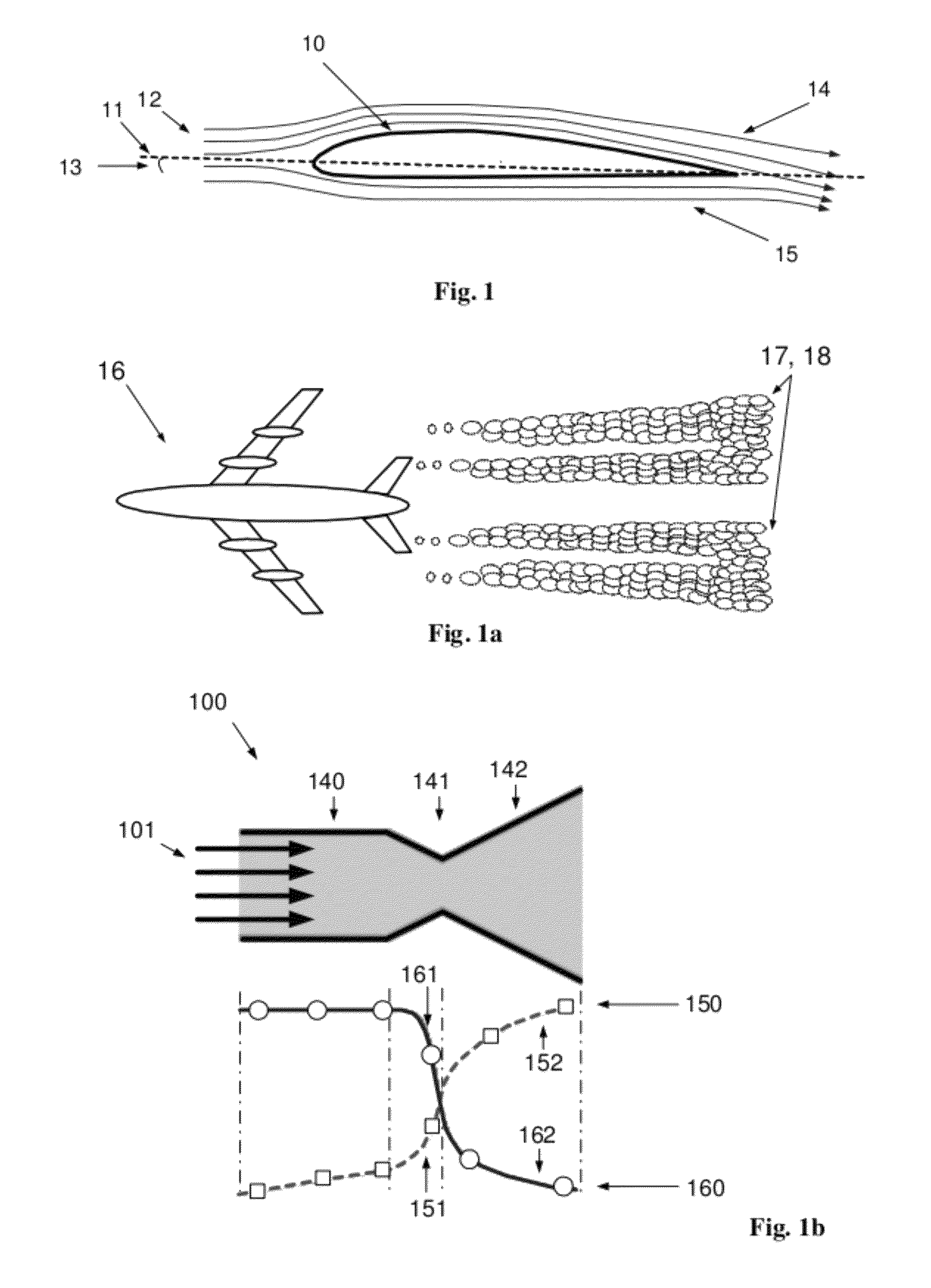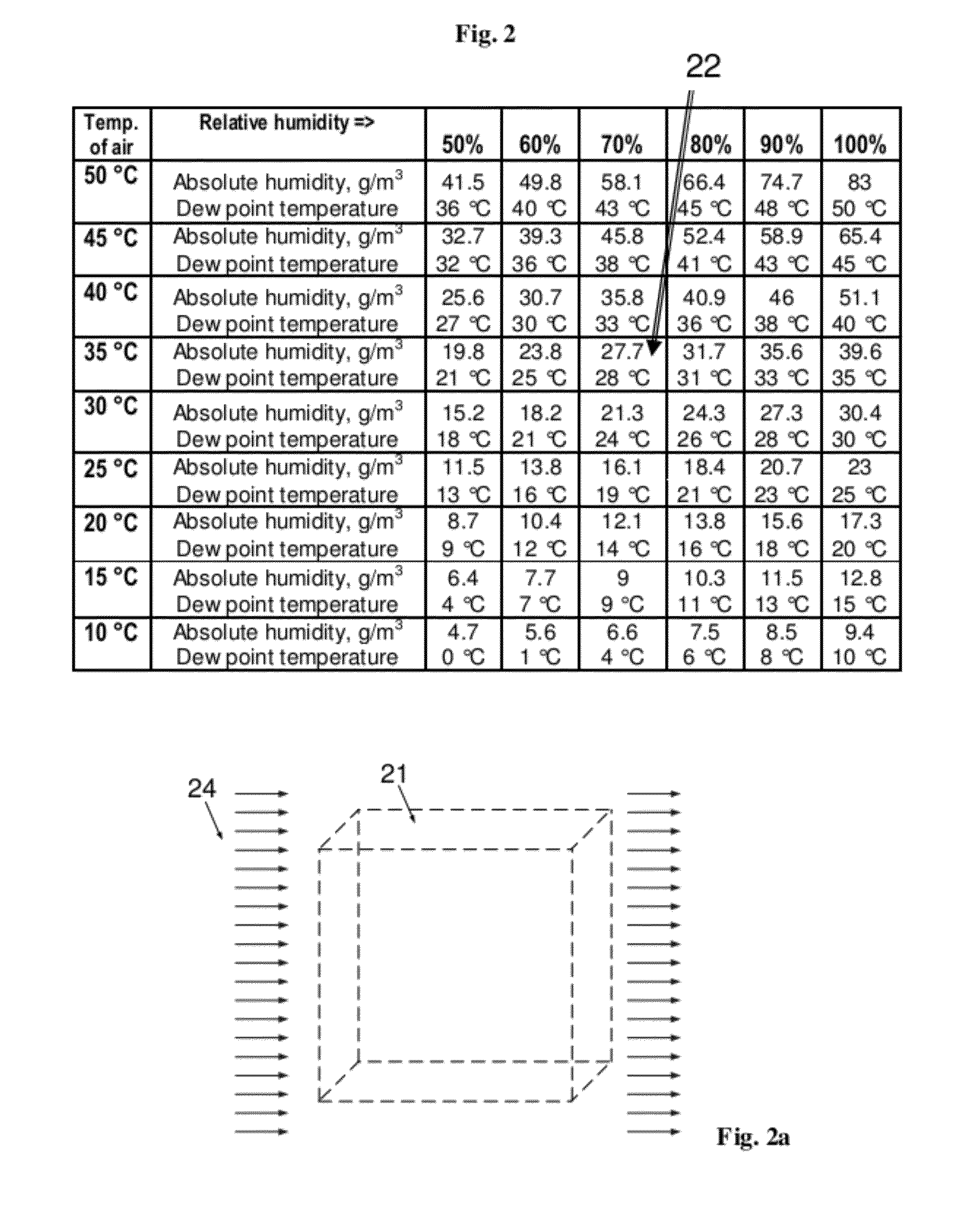Wind energy use
a technology of wind energy and wind power, applied in the field of eco-friendly technology, can solve the problems of insufficient cheap service, relative bulky application of wind power, and insufficient use of electrical power
- Summary
- Abstract
- Description
- Claims
- Application Information
AI Technical Summary
Benefits of technology
Problems solved by technology
Method used
Image
Examples
Embodiment Construction
[0089]The principles and operation of a method and an apparatus according to the present invention may be better understood with reference to the drawings and the accompanying description, it being understood that these drawings are given for illustrative purposes only and are not meant to be limiting.
[0090]FIG. 4 is a schematic representation of a trivial passive catcher 40 of water aerosols. Catcher 40 has plates 41 for accumulation of naturally condensed dew. The plates 41 have length L 45, width w 46 and are spaced at intervals 42. The total height of passive catcher 40 is h 47. When catcher 40 is placed in an open space, humid windy air 43 crosses though the free space intervals 42 between plates 41. If weather conditions are such that humid windy air 43 comprises water aerosols, drops of dew arise on the surfaces of plates 41. The condition occurs when the air temperature falls below the “dew-point” temperature.
[0091]For example, referring back to prior art FIG. 2, considering...
PUM
| Property | Measurement | Unit |
|---|---|---|
| temperature | aaaaa | aaaaa |
| absolute humidity | aaaaa | aaaaa |
| temperature | aaaaa | aaaaa |
Abstract
Description
Claims
Application Information
 Login to View More
Login to View More - R&D
- Intellectual Property
- Life Sciences
- Materials
- Tech Scout
- Unparalleled Data Quality
- Higher Quality Content
- 60% Fewer Hallucinations
Browse by: Latest US Patents, China's latest patents, Technical Efficacy Thesaurus, Application Domain, Technology Topic, Popular Technical Reports.
© 2025 PatSnap. All rights reserved.Legal|Privacy policy|Modern Slavery Act Transparency Statement|Sitemap|About US| Contact US: help@patsnap.com



